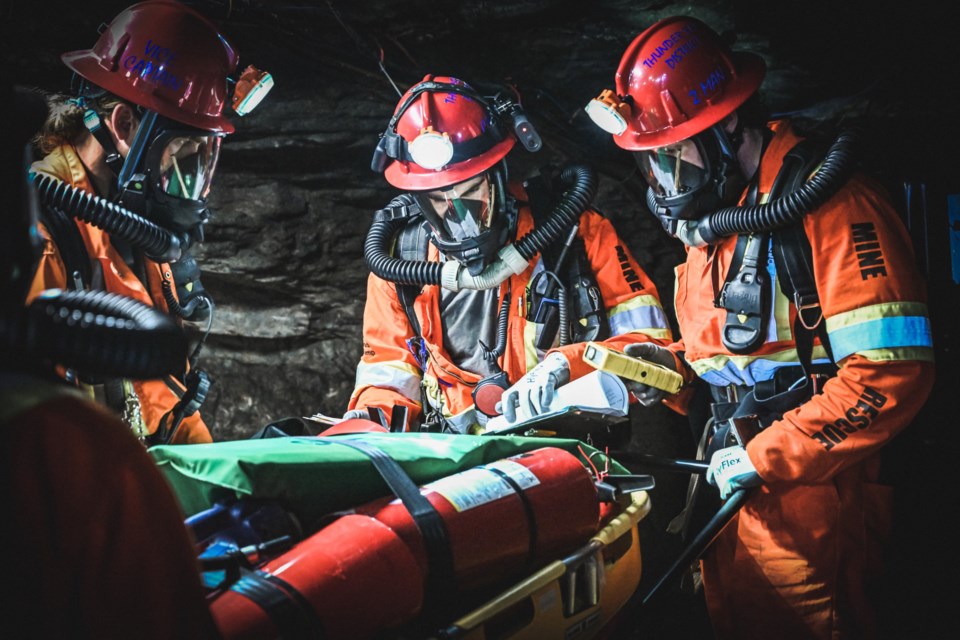OLIVER PAIPOONGE — There are two main purposes for Thursday’s Ontario Mine Rescue regional competitions for the Red Lake and Thunder Bay districts.
The first is to provide an opportunity to evaluate the mine rescue program as a whole and see what areas need to be improved upon going forward and what aspects are working.
At the same time, each of the teams that are coming to the NorWest Arena will be looking for regional bragging rights and a chance to compete at this year’s provincial championships, which are slated for June 4-7 at Fort William Gardens in Thunder Bay.
“As someone who has competed before, it kind of brings back that competitive edge that you had playing sports or whatever you might have been doing before you had to go and get a real job,” said Curtis Atkinson, who is a mine rescue officer working out of the Thunder Bay district.
“This really brings back that level of competition that a lot of us have kind of instilled deep inside. There is definitely bragging rights on the line and a lot of work that goes into the competition itself.”
The regional competition will feature two teams from the Red Lake district — Evolution Red Lake and Newmont-Musselwhite — and two teams from the Thunder Bay district — Lac Des Iles Impala Canada and New Gold Rainy River.
The winner from each district will advance to the provincials next month.
The competition is developed by the mine rescue officers and is part of a much larger scenario that teams will train for.
“What we’re trying to do is make them think about ... if they are in a real emergency, how would they respond to this,” Atkinson said.
“We have over 900 volunteers across the province and these competitions are a way for us to kind of evaluate and take what they’ve learned in a smaller group.
“There’s a lot of additional studying, training and things like that, so there’s a lot of times where you are leaving your husband, your wife or your kids at home and spending a little bit of extra time in the books or honing your skills to get better.”
Atkinson also said the fact that the mine sites allow the competitors to take part in the event is greatly appreciated.
“They release them from their day-to-day jobs to make sure that in the event of an emergency, they are prepared as best as they can be for an emergency situation,” Atkinson added.
The competition creates simulated underground emergencies where teams are evaluated on firefighting skills, first aid response, the use of emergency equipment, and decision making under stress.
A written theory exam and an assessment of technicians who service emergency response equipment are also part of the event.
“I think the one thing that would surprise people from the outside world is just how much time you spend with your nose in our handbook,” Atkinson said. “We basically treat that like the mine rescue bible. All of our procedures and equipment are listed there.
“You spend your 10-hour training day with your team doing little scenarios and then you go home and spend a few hours looking through your book. That’s what you are doing for four weeks straight leading up to the competition," he said.
“Once you get into the mine rescue competition for the first time, it’s pretty hard to kick that habit and you just want to keep going back and trying to get better and hopefully have a chance to go to the provincials.”
— TBnewswatch




